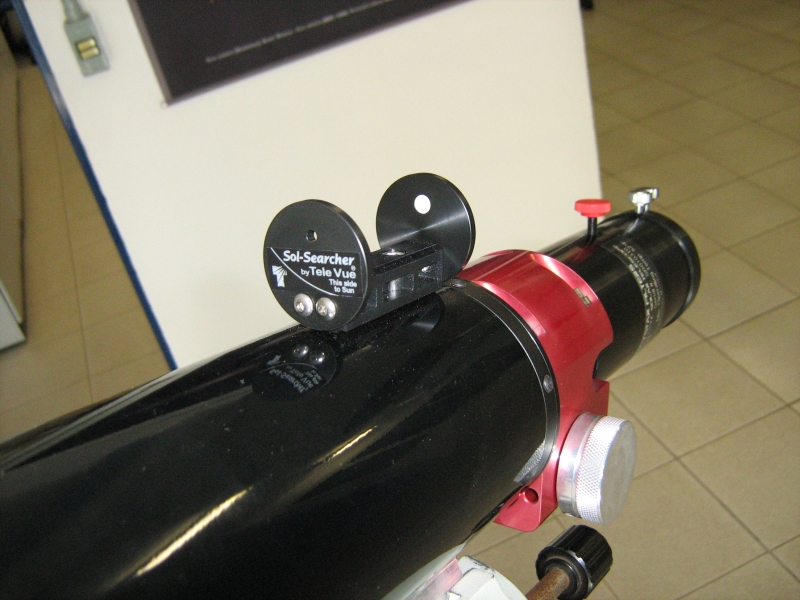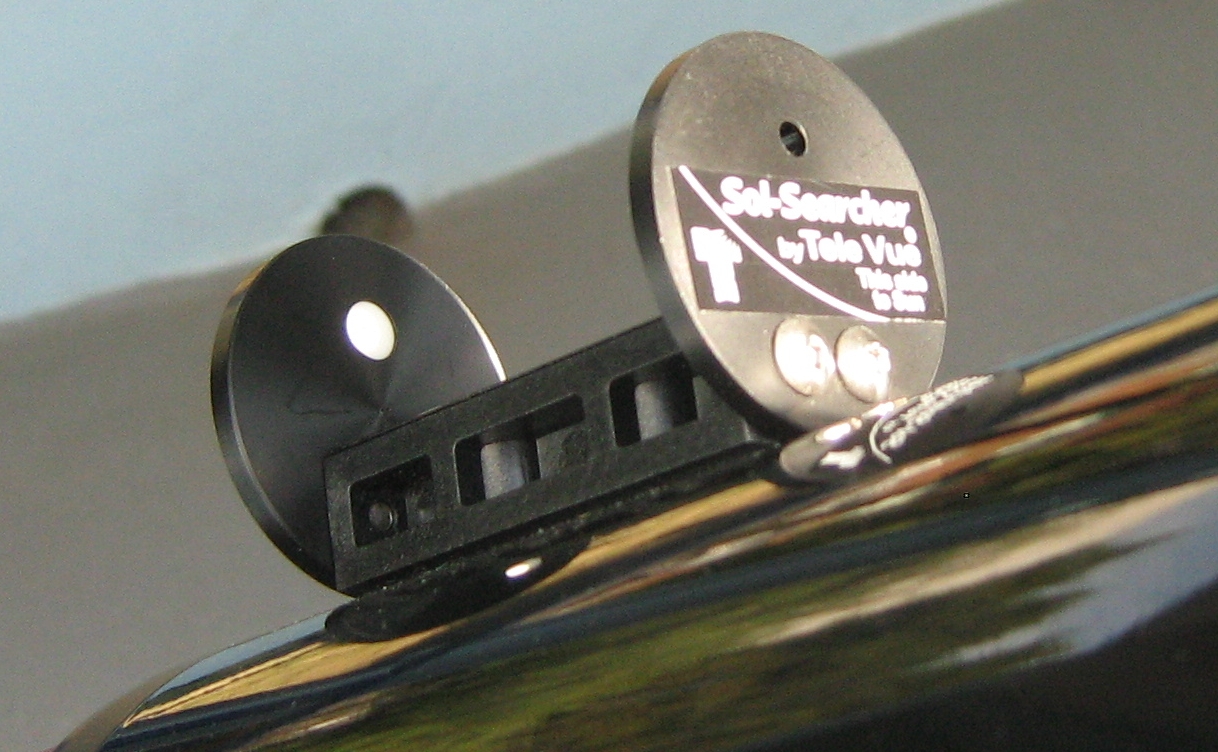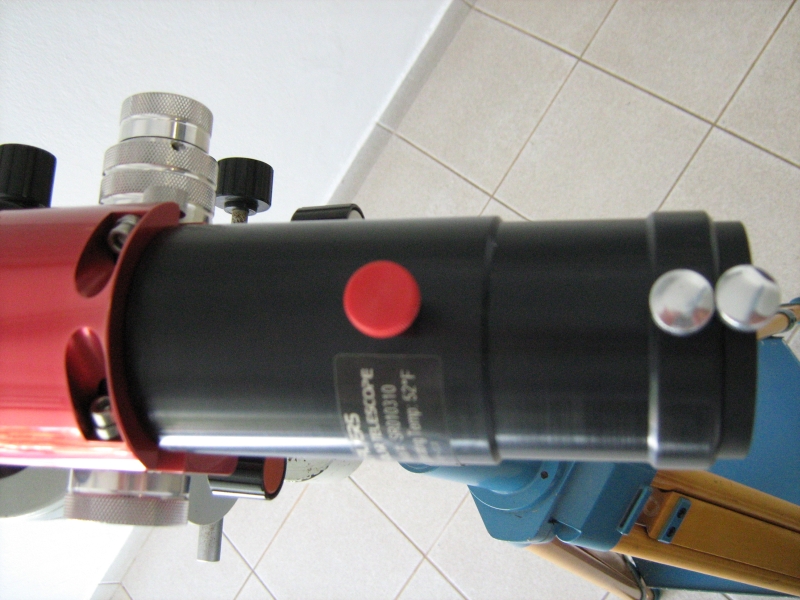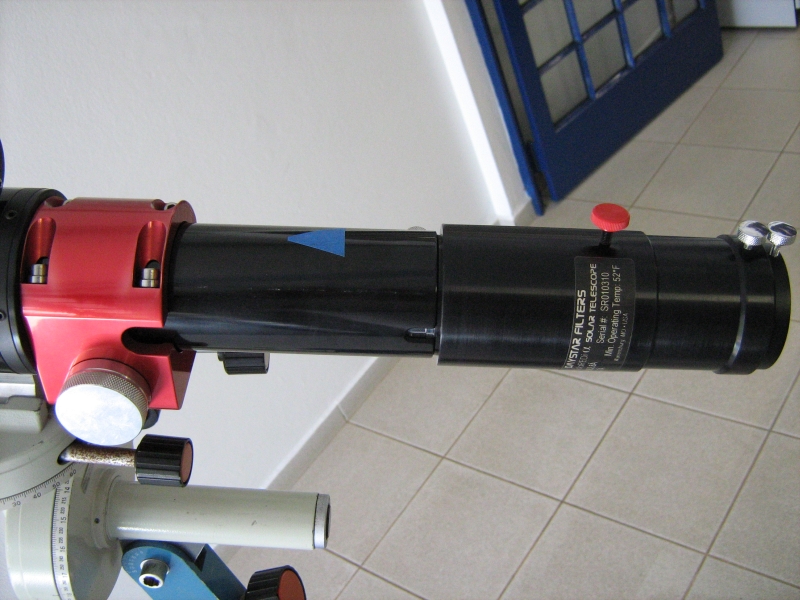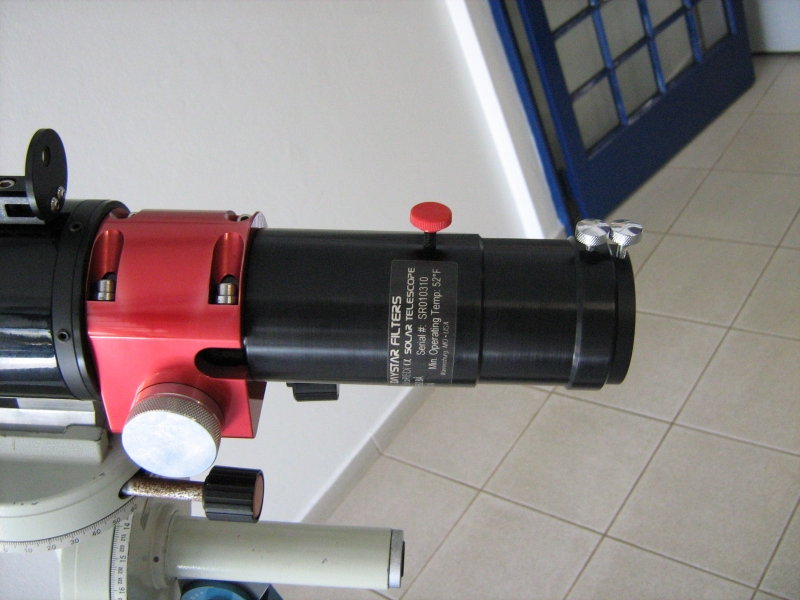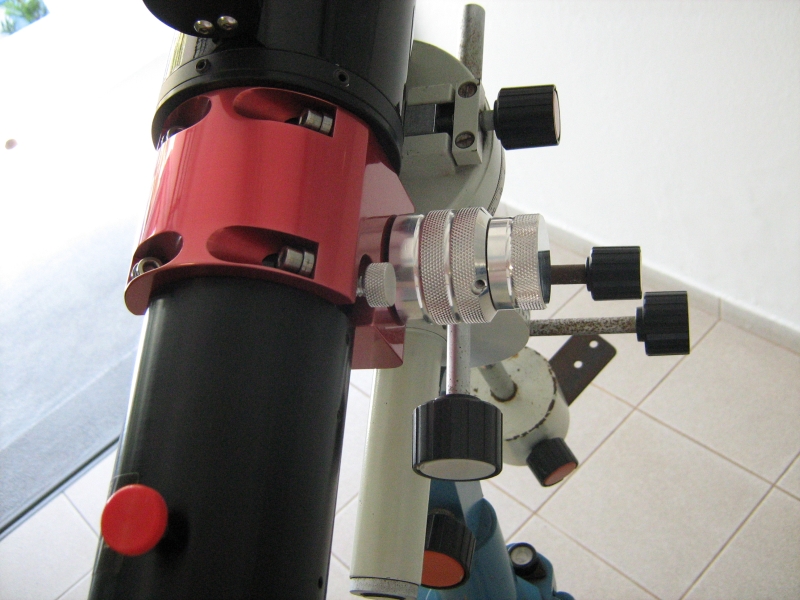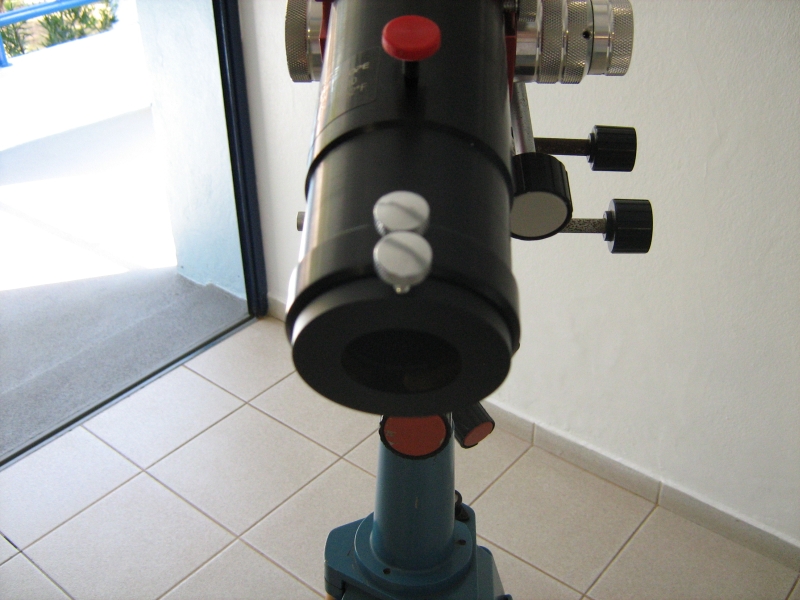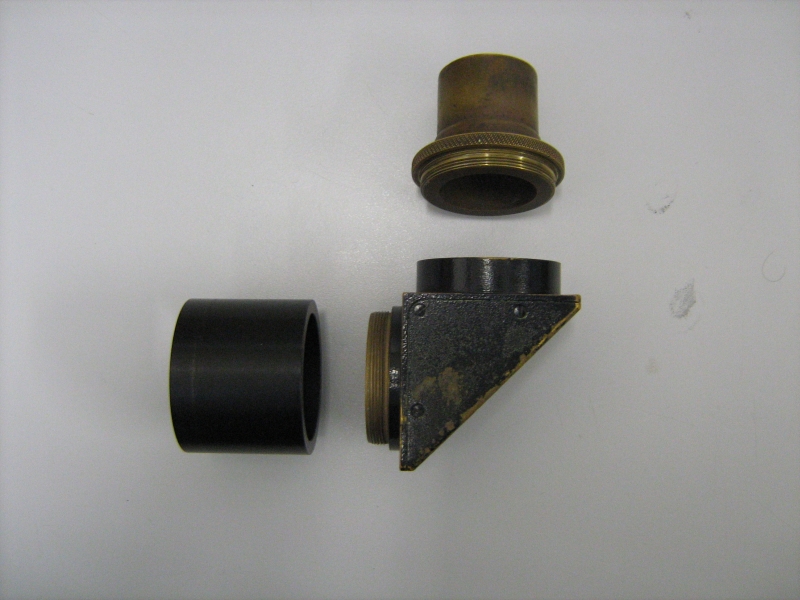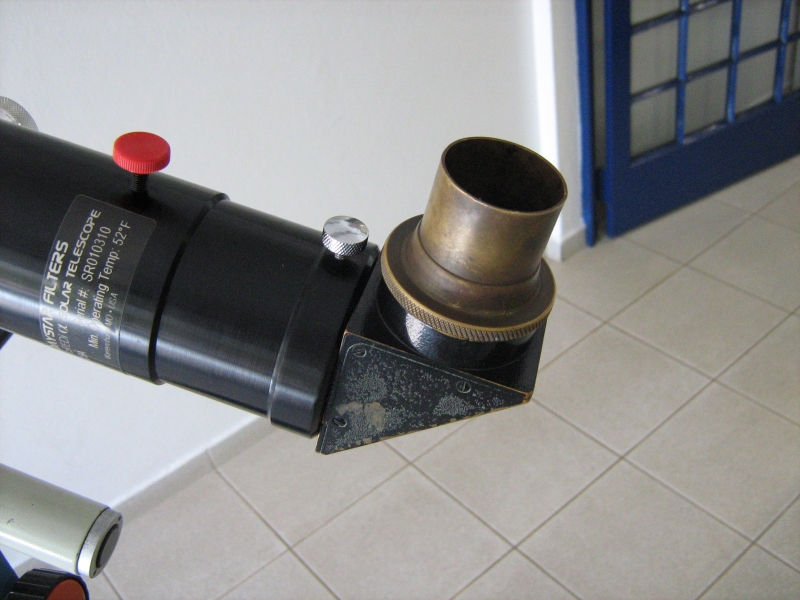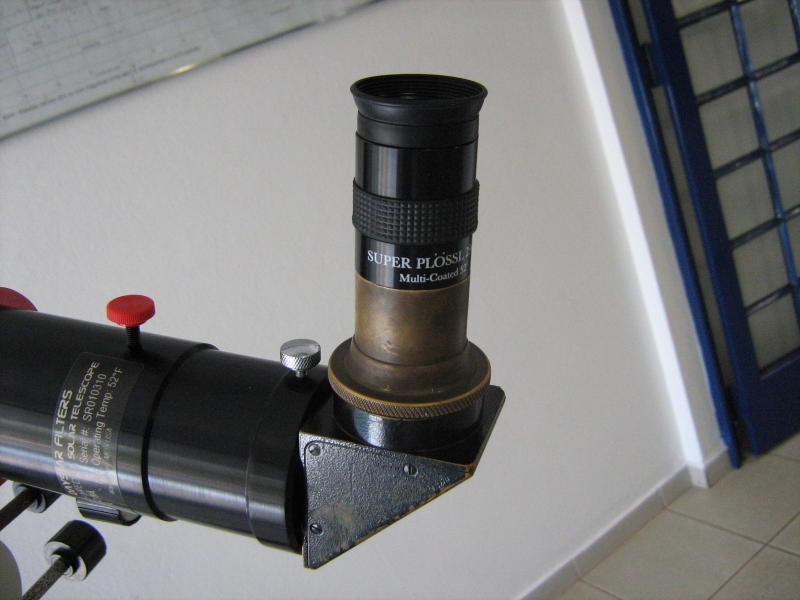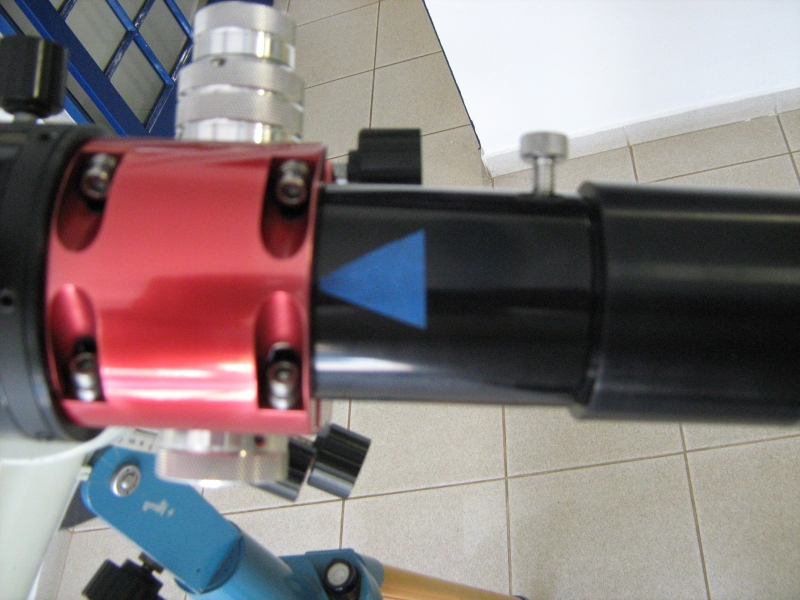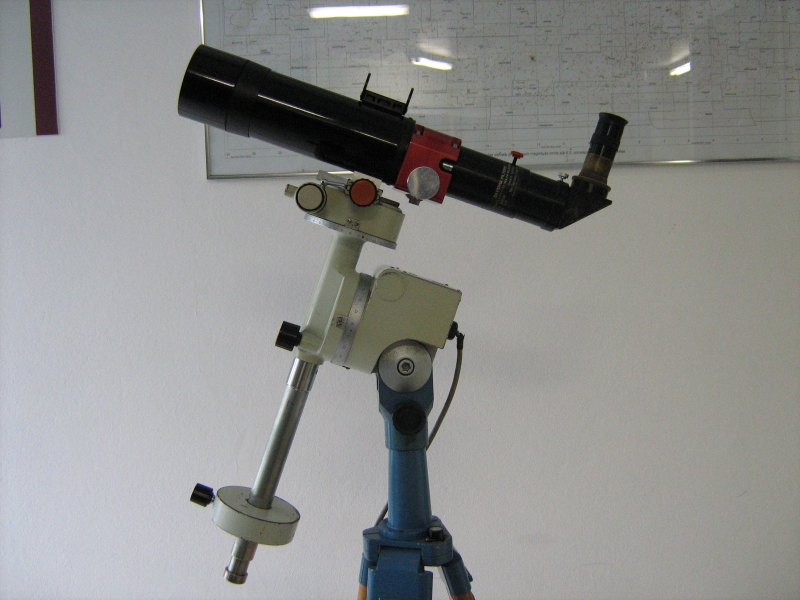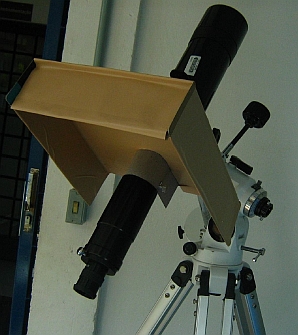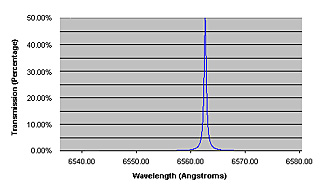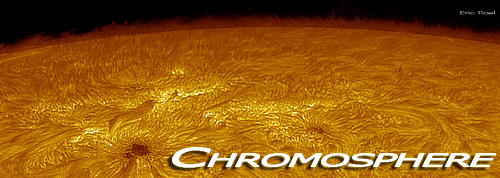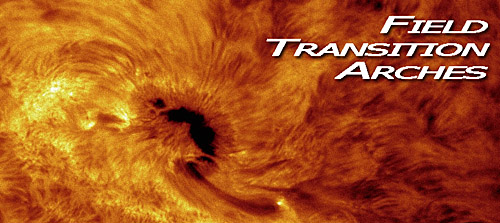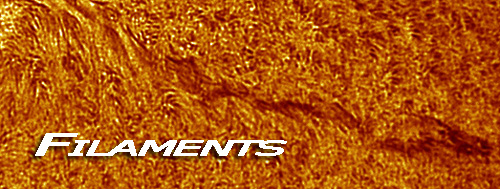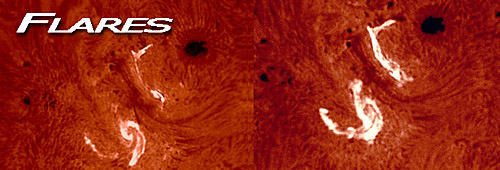solaredi - h - alpha 656,28 NM 0,7angstron 60/1375
Especificação do Telescópio H-Alpha
Diâmetro da Objetiva 60 mm
Distância Focal 1375 mm
Abertura de saída 32mm
Poder de resolução 2.8"
H-Alpha: Comprimento de Onda 6562,8 Angstron Banda de 0,7 Angstron
Temperatura de Operação: 11,1°C até 33,3°C
Visão do Telescópo H-Alpha SolaREDI montado sobre a montagem equatorial TM. Deve-se usá-lo com a montagem Equatorial Ib e com um disco de contrapeso para balancear o conjunto. Não usar o contrapeso principal.
Visão do dispositivo de busca do Sol para centralizá-lo no campo de visão.
Detalhe do sistema de localização do Sol. Para centraliar o Sol no sistema óptico efetuar a operação sem a ocular e procurar quando aparece uma imagem vermelha do Astro Rei preenchendo o campo de visão.
O botão vermelho é usado para sintonizar banda de 0.7 Angstron do H-Alpha. Acima a esquerda vê-se os botões de focalização com ajuste rápido e ajuste fino. A direita os anéis de engate para 1,25" e para 2". O tubo de focalização está sua posição mínima.
O tubo de focalização está com o seu deslocamento máximo (4,5"). A seta azul indica a posição de foco para a combinação óptica de luvas, prisma e ocular empregadas na associação óptica para observação visual.
Novamente o tubo de focalização recolhido e na extremidade direita estão os encaixes para 2" e 1.25".
Detalhe dos botões de focalização ao centro. O maior para movimentos rápidos e a sua direita o botão de ajuste fino.
Detalhe do encaixe de 1.25"
Detalhe do encaixe de 2"
Combinação de acessórios para observar o Sol a noventa graus do eixo óptico principal. A esquerda a luba de 2" e rosca de M44x1, ao centro o prisma de noventa graus e acima a luva de encaixe para oculares de 1.25".
Acessórios acoplados ao telescópio.
Conjunto óptico completo com uma ocular Super Plössl de 25 mm.
Ajuste da banda H-Alpha deslocando-se entre o lado vermelho e o lado azul com a obtenção correta dentro de 6562.8 Angstron.
Tubo de focalização deslocado para a posição em que a combinação de acessórios ópticos permite a focalização do Sol.
Na foto acima, nós vemos o SolaREDi montado sobre a Montagem Equatorial Ib, note o detalhe do contrapeso utilizado para balancear o conjunto em relação ao eixo horário do telescópio.
Anteparo de Proteção da Luz Solar (Manual de uso)
SolaREDi manual (em inglês)
Possíveis resultados Observacionais:
Bandpass Filters
We target the emission line of known elements such as Hydrogen, Sodium, Calcium, etc. By eliminating all other light, we can see the activity happening in these specific chemicals and learn more about the sun and its behavior. The narrower the bandpass, the more off-band light is rejected. This refinement in manufacturing accomplishes higher contrast. The sun is bright enough. We do not need to capture more light. To add detail, we need 'more dark' or exclude more light.A bandpass filter's width depicts a range of wavelenths are allowed to pass through it. We measure light's color or position in the spectrum by its wavelength. The visual spectrum is found between about 3900 and 7000Å. Red light has longer wavelengths and blue has shorter wavelengths. We measure the distance between peaks in the wave to arrive at its wavelength. That unit of measure is an Ångstrom. An Ångstrom is 1/10th of a nanometer. A nanometer is 1 billionth of a meter. Prominent lines for chemicals of interest on the sun are: Hydrogen Alpha: 6562.8Å and Calclium K and H lines 3933Å and 3968.5Å. Note that the Hydrogen wavelength is almost two times as long as the blue Calcium wavelength.
Spicules dominate the chromosphere in non-active regions and have been studied exhaustively. They are barely visible, last only about 15 minutes, and resemble a "burning prarie". Some jets can be seen shooting 10,000 km up from the Sun's limb at velocities of about 30km/sec. Studied exhaustively, they present a number of observing challenges, as they are too small to resolve and move so quickly as to present wing-shift challenges.. Inside an active region, where sunspots are originally linked by a FTA, a shear bouandary forms. Field Transition Arches are different from filaments in that they are thin and not very dark. The FTA usually has plage or granular structure underneath.
http://www.daystarfilters.com/introduc.shtml -Photos by Eric Roel, Dave Tyler, Vic & Jen Winter
Ultima Atualização: 02/06/2011


